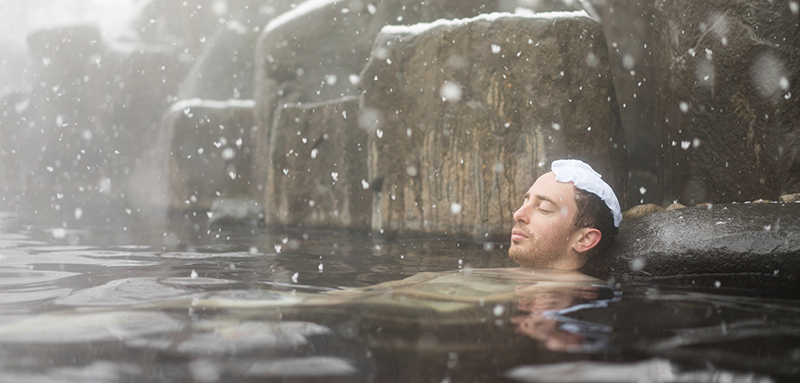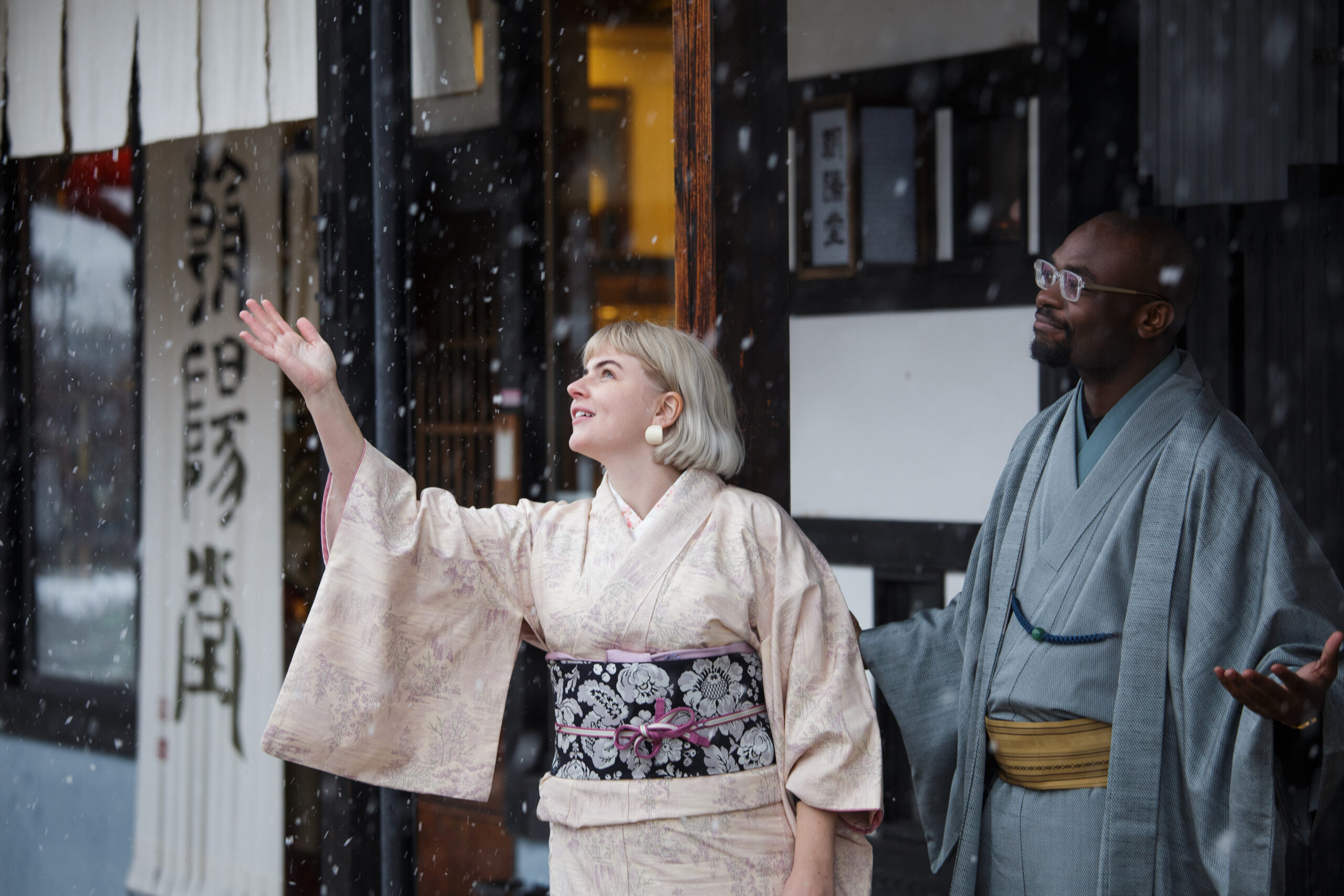“Hyakuhatto, Hyakuhatto, one hundred rice is ittogosho, Jumonshu is 16 cups, 16 cups.”
Why are there so many events in the YUKIGUNI in winter?
Such events include Toshitori (an event held at the end of December in which people celebrate getting older), New Year’s celebrations, Wakagi mukae (an event held at the beginning of January in which people gather firewood in the forest), little new year (15th January), Torioi (driving off birds, held during little new year), dango kazari (display of dango dumplings) and sainokami (bonfire festival held during the little new year to worship local deities to pray for protection from natural disasters and illness).
Perhaps because people are busy with gathering edible wild plants and rice-planting in spring, farmwork in summer, and rice harvesting and winterisation in autumn. On the other hand, in winter, there is a long period of tranquillity in the YUKIGUNI. In addition, it is a harsh natural environment where the whole area is covered with snow for half a year. Perhaps these events are creative ideas to help enjoy life under the snow during winter. It is certain that such traditional snow festivals are full of passion and filled with the imagination of people who live with snow.
Determination to preserve festivals
百八灯 Hyakuhatto
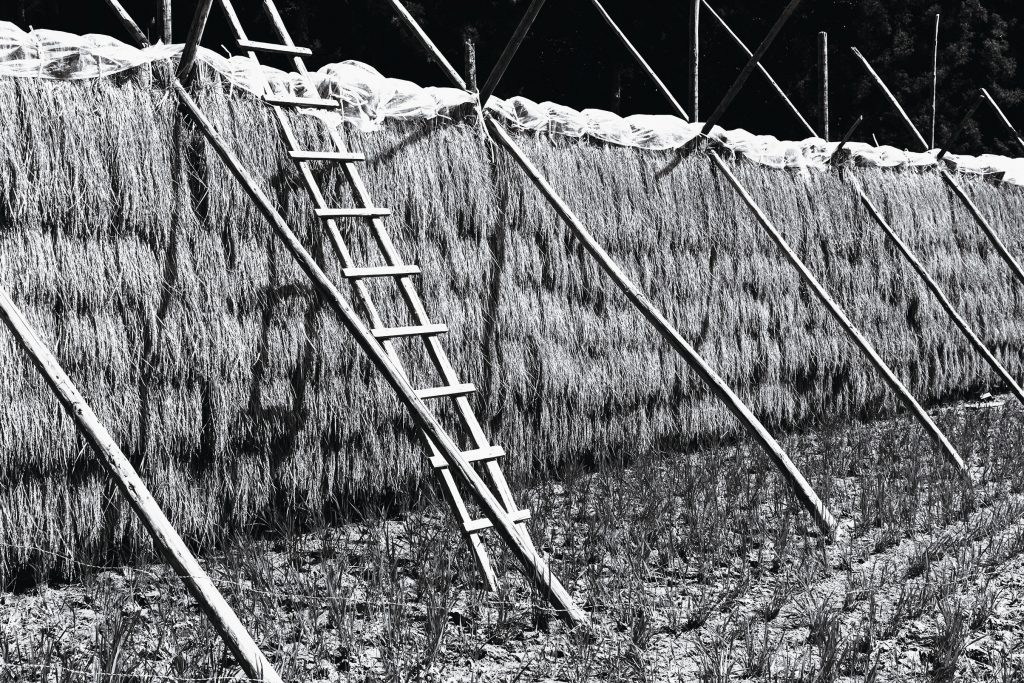
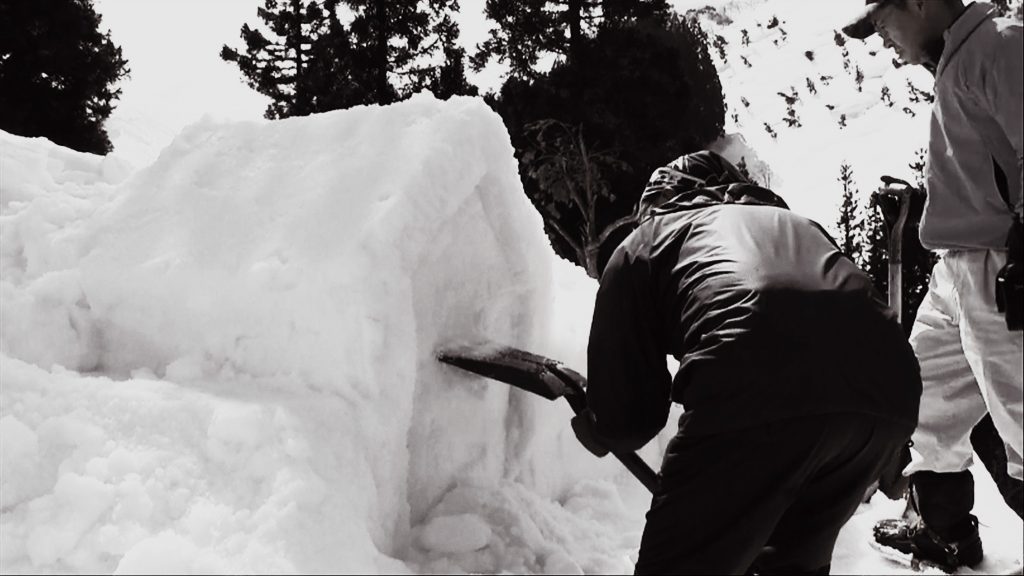
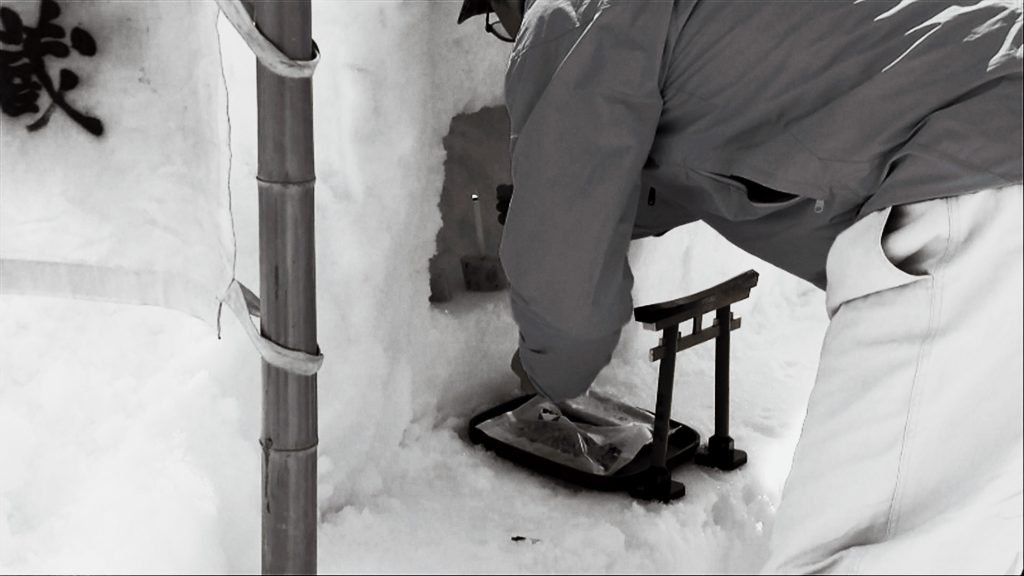
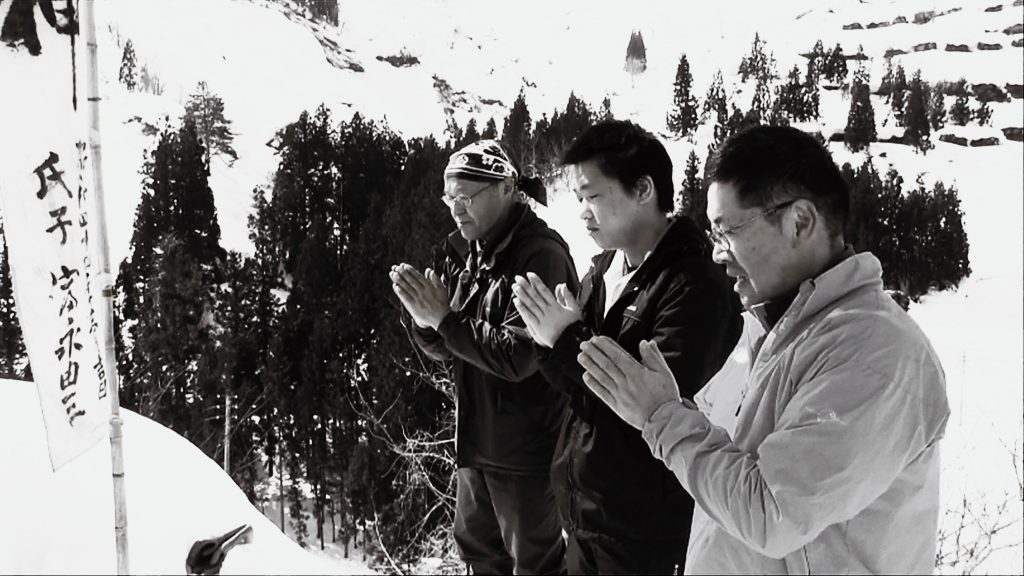
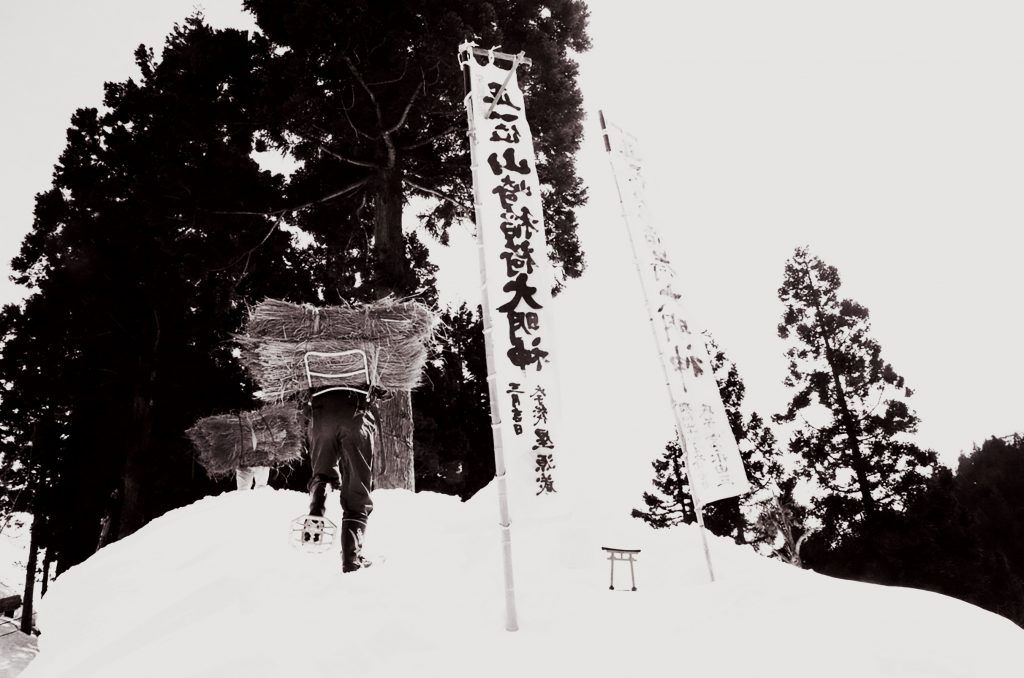
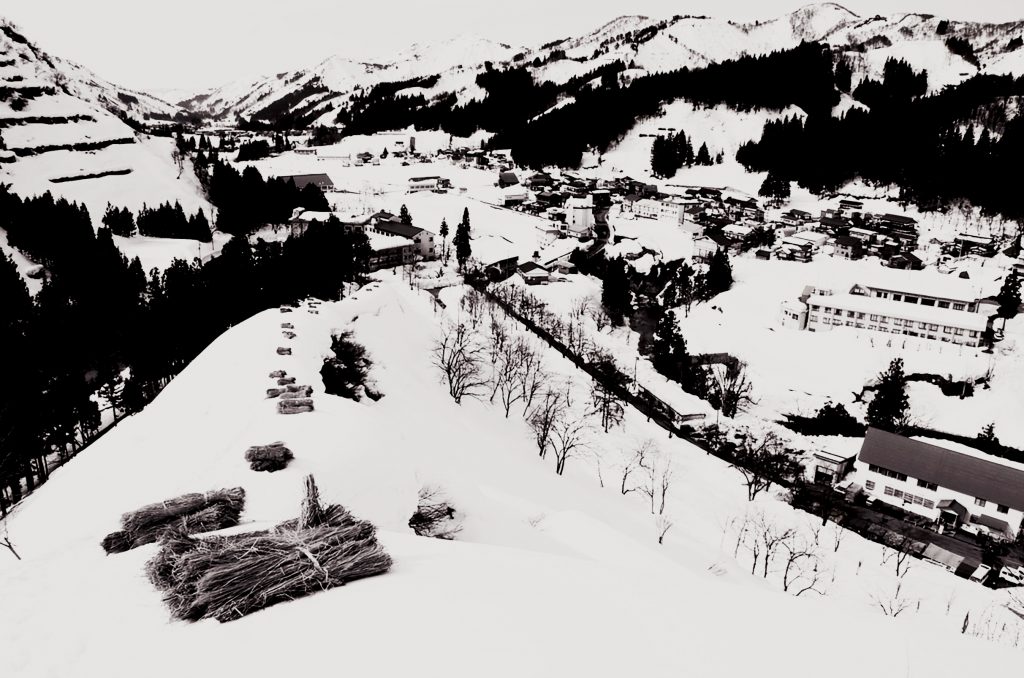
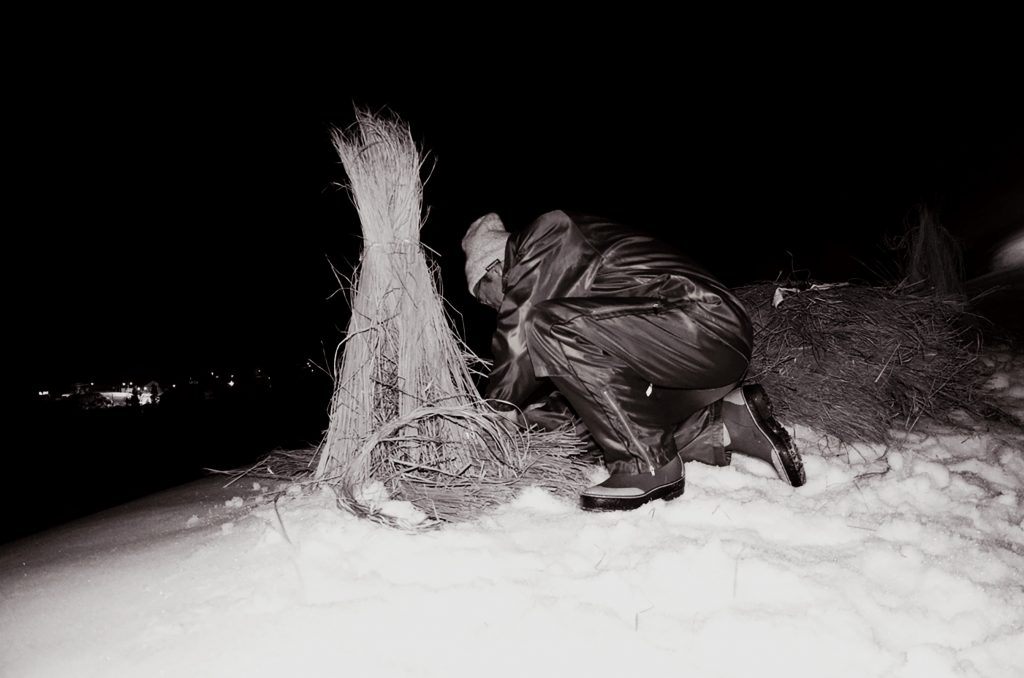
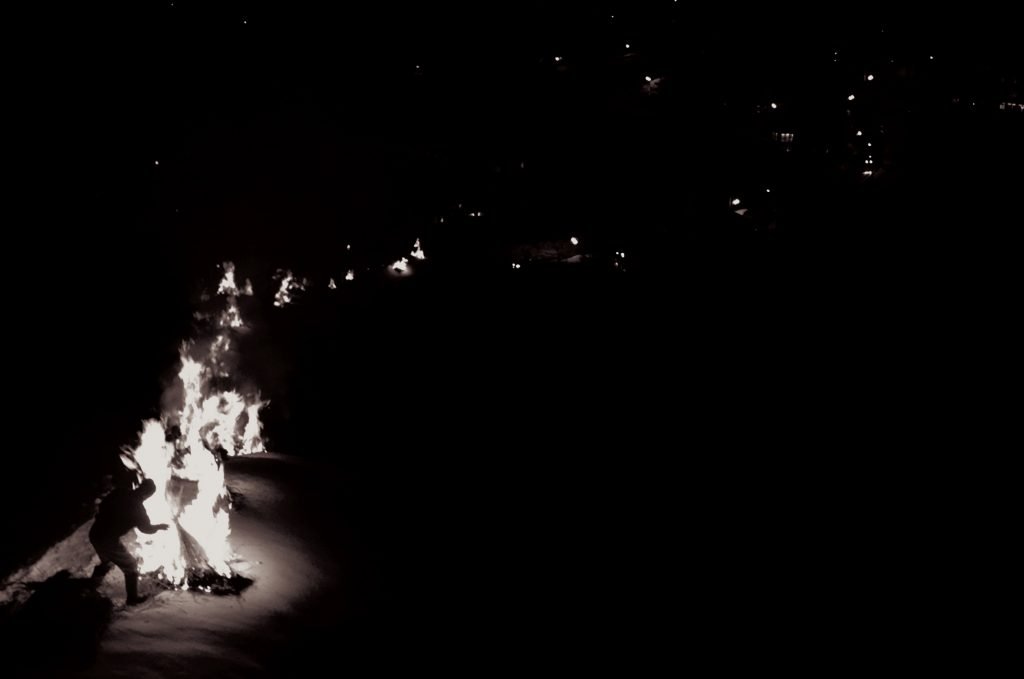
“If I cannot make a good fire for the event, I will get in trouble.” Says Mr. Tominaga Osamu with a smile. He runs the hotel “Sakaeya” in the Oritate area of Uonuma City and is a member of the steering committee of the unusual festival “Hyakuhatto”. Hyakuhatto was held every March on Hatsuuma eve (the first “horse day” in any lunar month), and is one of the traditional festivals in Japan that has been held since the early Edo period or Kan-ei era. These days, the festival is held on the first Sunday of March.
It is a festival where farmers worship “Inaridaimyojin” – an important deity for farmers – and pray for a good harvesting season. During the day of the festival, men carry rice straw on their shoulders and walk from Inari shrine at the foot of the mountain to the top of the mountain covered with snow. It is a hard task, even for the local men who are used to walking on snowy roads. Furthermore, walking for a little while can make you hot despite the snow, because in March, sunshine is amplified by the reflection of the snow.
“Each of us makes many round trips and places rice straw on mountain ridgelines using our long years of experience and intuition, so that when the rice straw is burnt, it looks beautiful from the foot of the mountain.”
When the curtains close at night, it is finally the beginning of the festival. At the green light for ignition, the staff members called “Hiban” (fire watchers), who watch over fire, ignite the rice straw at the same time. “Hiban not only ignite the rice straw but also separate rice straw and add it to the fire so that the fire goes upward. This also requires long years of experience.” The shadows of men appear on the snowy mountain on fire. In this fantastic atmosphere, they chant “Hyakuhatto, Hyakuhatto, one hundred rice is ittogosho, Jumonshu is 16 cups, 16 cups.”
This allows us to estimate the cost of living during the Edo era, because “hyaku” refers to 1 cent, and “Jumon” refers to one tenth of a cent. The chant makes the festival more magical. The Hyakuhatto lights are put out after only 15 minutes, but mystical silence emerges when the lights are out, and it announces the beginning of spring to the people of the Oritate area which is covered with snow for half a year.
The making of the festival “Hyakuhatto”
1 Collecting rice straw
All begins with collecting rice straw needed for “Hyakuhatto”. Starting after harvesting in October, staff members, called “Toshigyoji”, collect a lot of rice straw in the warehouse.
2 “Michizuke” (Making a path)
This refers to the making of a path at the ridgeline in the morning of the festival day. The Oritate area in Uonuma City is one of the most snowy areas. Equipped with snow shoes, men push through 3-meter snow and tread down the snow step by step. They then put marks on the path where the rice straw will be placed.
3 Making a snow shrine
In the morning of the festival day, in Uonuma City, where snowfall exceeds 3 meters, it is impossible to visit the shrines under snow. Therefore, we make a snow shrine instead and pray. Because it is an “Oinari” (god of harvest) shrine, we offer deep fried tofu or liqueur (as fried tofu is said to be a favourite food of foxes, which in turn are said to be messengers of Oinari).
4 Carrying the rice straw to the mountain ridgeline
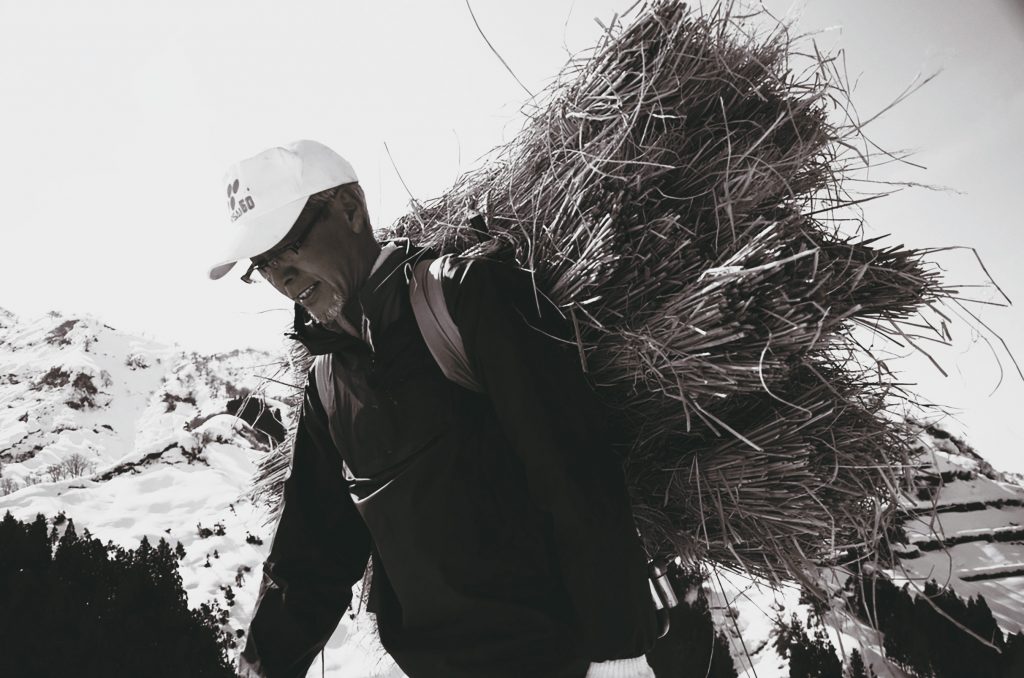
The rice straw is carried to the mountain ridgeline in a few trips. Each person carries 5-6 bundles of rice straw and makes 2-3 round trips from the foot to the top of the mountain. Each trip takes about 20 minutes.
5 Ignition
We ignite the rice straw that were carried to the top of the mountain during the day, praying for a good harvest season this year. These days, we use the fireworks at the foot of the mountain as a signal to ignite the rice straw. Back in the days when mobile phones did not exist, the staff members ignited the rice straw stacks one by one.
6 Hyakuhatto
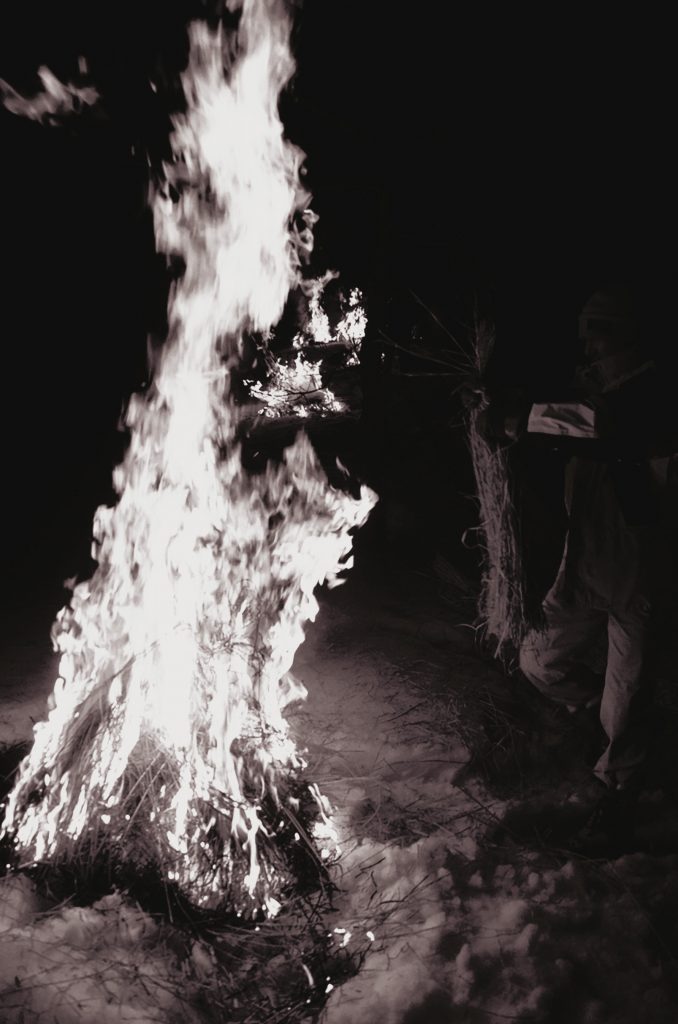
In order to build beautiful flames, each staff member called “Hiban” (fire watchers) ignites the rice straw and watches over one fire. The Hiban adds rice straw to the fire from above so that the fire burns higher. Such tricks create a fantastic scene.
7 Putting out the fire and going down the mountains
The fire will burn out after about 15 minutes. When the fire burns out, the Hiban go down the mountain and they have an after party. They discuss the results of this year’s fire and celebrate their efforts for the festival.
8 “Hyakuhatto” Snow Festival Venue
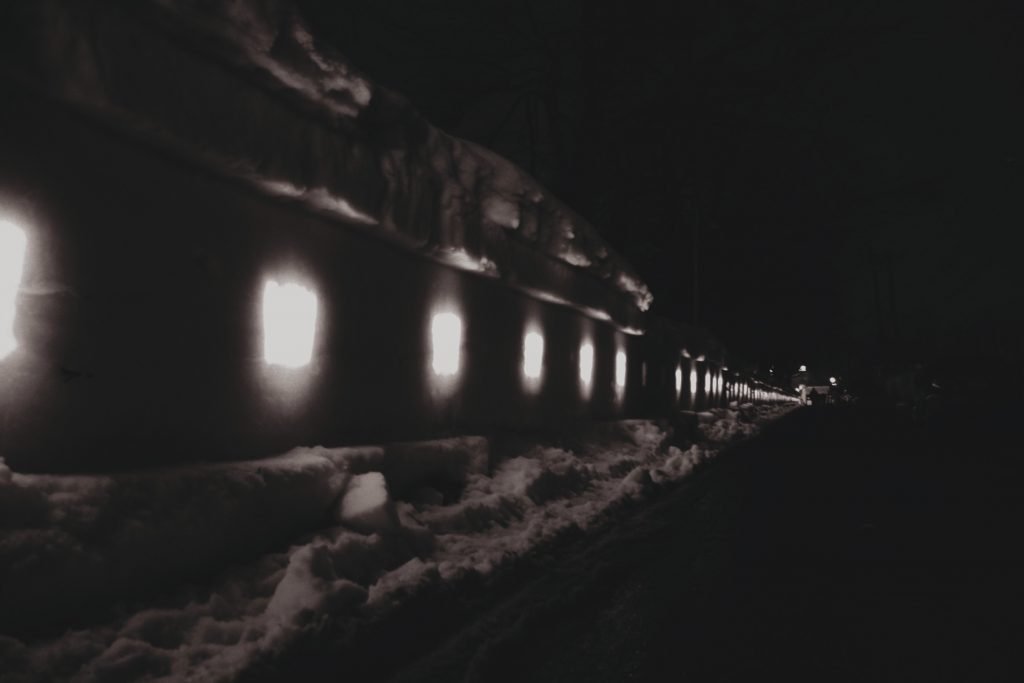
At the snow festival venue at the foot of the mountain in the Oritate area, many entertainment productions are performed on the snow stage. Japanese soba, pork miso soup and amazake (sweek non-alcoholic sake) are provided to visitors for free. Furthermore, pounding rice cake with 6 people, famous in Oritate, is popular among visitors. The festival comes to an end with spectacular fireworks.
Fire lights up on the mountain ridgeline one after another. Rice straw neatly placed from the foot to the top of the mountain illuminates the fantastic mountain ridgeline against the winter night sky. The sounds of the fire overlap with the chant of the Hiban. “Hyakuhatto, Hyakuhatto, one hundred rice is ittogosho, Jumonshu is 16 cups, 16 cups.” Looking at this scene that has repeated itself since the early Edo period or Kan-ei era, local people pray for rich harvest, and feel the beginning of spring.
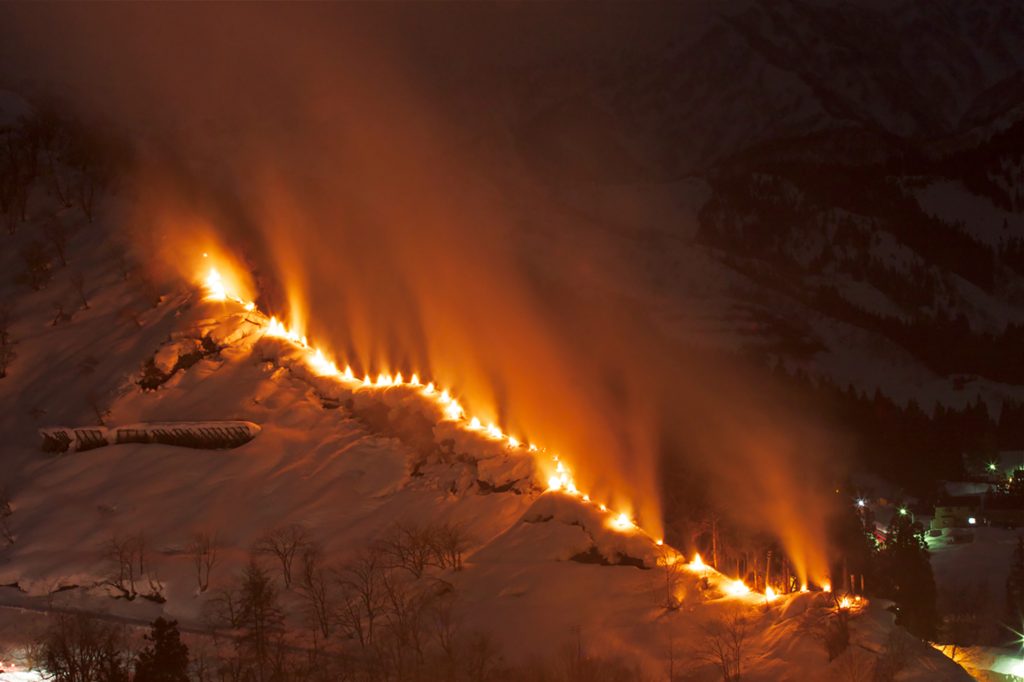
Hyakuhatto – Traditional Snow Festival in YUKIGUNI
First Sunday of March, begins at 18 :30
Niigata, Uonuma City, Shimooritate 430, Oritate area Onsen association. Hyakuhatto Secretariat. TEL.025-795-2166
Hyakuhatto Warashoi Experience
1 March 2020, 12:30- (there is a participation fee)
You can experience “warashoi”, which means you place rice straw to be used for Hyakuhatto on the mountain ridgeline. It is a rare opportunity to experience a traditional event that has been celebrated since the early Edo period. Why don’t we create Echigo’s unusual festival “Hyakuhatto” together? Please inquire for details.
Uonuma City Tourist Association TEL.025-792-7300
It’s time for snow festivals ! There is more !
Hardship of bridegrooms?
There are many events in the YUKIGUNI where grooms are bullied as part of the event, probably originally in revenge for the young village women who were taken away by the grooms. Grooms are sometimes thrown in the snow or get smoked in burning straw. Furthermore, the word “Muko” (groom) can be interpreted in many ways. Muko could mean a husband who joined his wife’s household. Muko could also mean a newly-married groom. The Muko will become a village member through hardships and prayers for fertility and prosperity of descendants.
雪中花水祝 Flower Water Celebration in the Snow
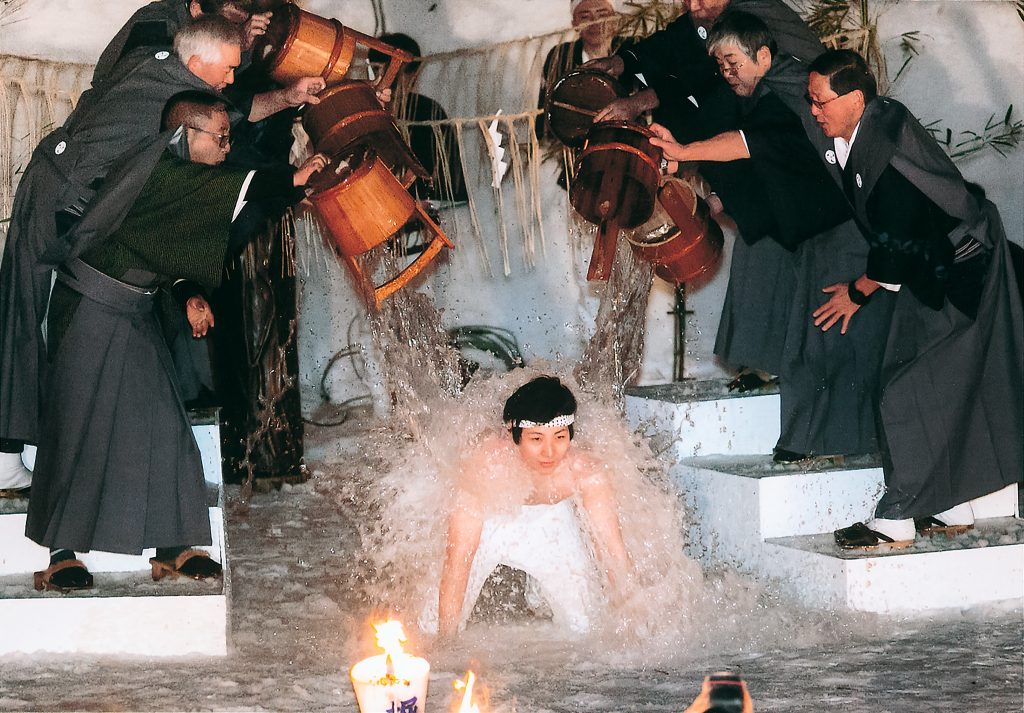
People dressed up as Sarutahiko (a shinto deity), Amano-uzume (the shinto goddess of dawn), Yamabushi (mountain ascetic hermit), priest, people who reached 60 years of age, and shrine maidens, as well as newly married husbands walk around the town. The holy water collected from Kotai-jingu shrine at the beginning of the year from the Imperial Grand Shrine is kept until the day of the event, then it is poured on the groom’s head, wishing for fertility and a harmonious marriage.
The festival was discontinued in 1874. Having thus been abolished in 1874, it was revived, for the first time in 115 years, in 1988 and has been continually celebrated until today. The name of the festival – “Flower Water” – seems to have been derived from the fact that itadori (Japanese knotweed) is put in the sacred water.
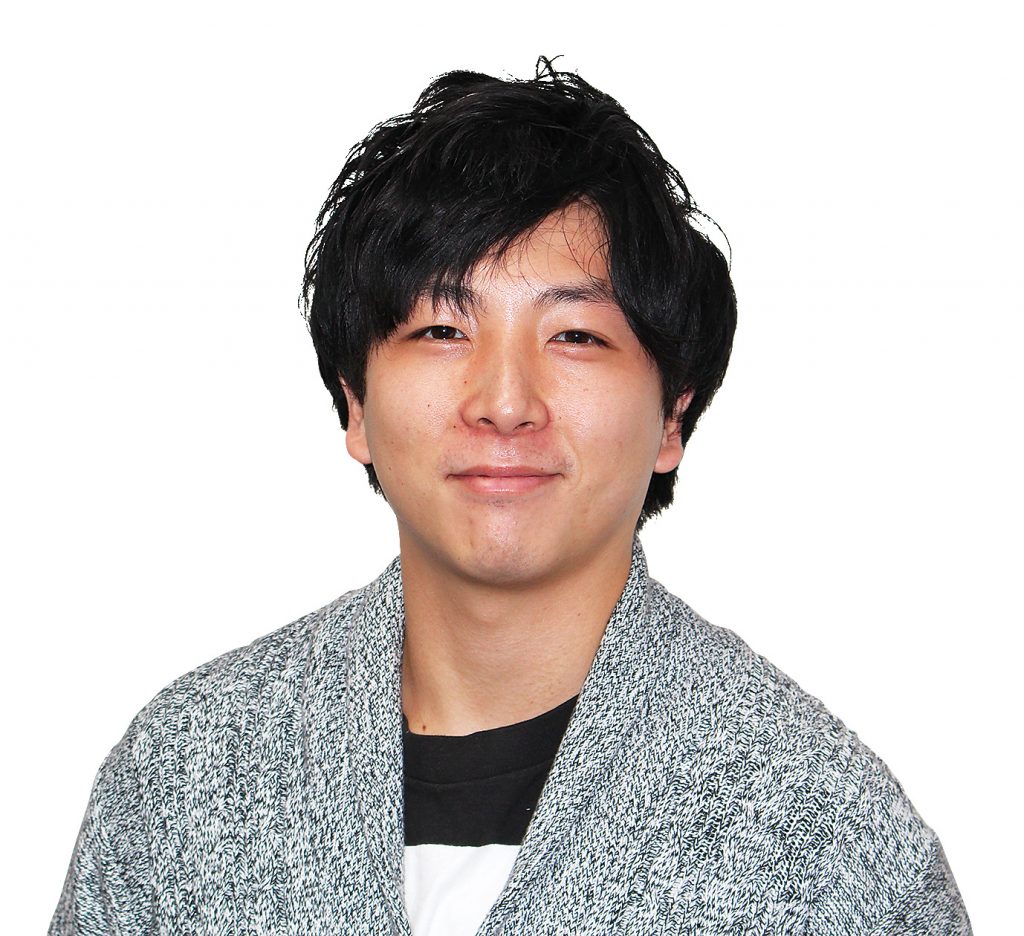
Passion for festivals
This is a festival that I have been familiar with since I was little. It is a very meaningful festival where you can introduce your wife to the community as a groom and deepen your ties to the community. Traditionally, the groom who is splashed with holy water at the water celebration is a man who was married the previous year. Nowadays, people from Uonuma City and those with ties to the region can also participate. I want to continue the tradition of the Flower Water Celebration as a local.
婿いぶし Groom Smoking



A traditional event for Little New Year in the Oshirakawa area. A space is created in the lower part of the bonfire, where charcoal is prepared to smoke the groom. The groom is put inside with straw dolls that look like a married couple. It is a rare event where people pray for protection from sickness and prosperity by smoking the groom.
The last time this event was held was three years ago. In the past, there were 150 households in the village, but now there are only 60 households. We are concerned about a shortage of successors, including young people. “In the past, there were a lot of people, and groom smoking would take place every year. Not only grooms but also young people who reach the age of maturity were smoked. People would smear charcoal on each other and it was a very lively festival.” Says Mr. Sato in a nostalgic manner. He seemed to be longing for a lively groom smoking of the past.


